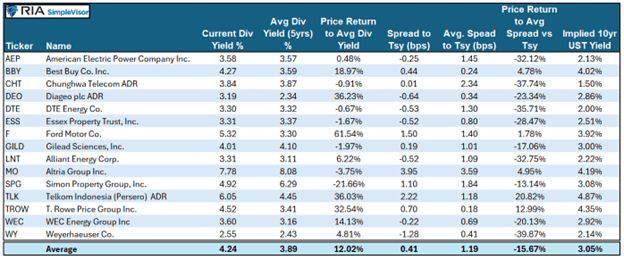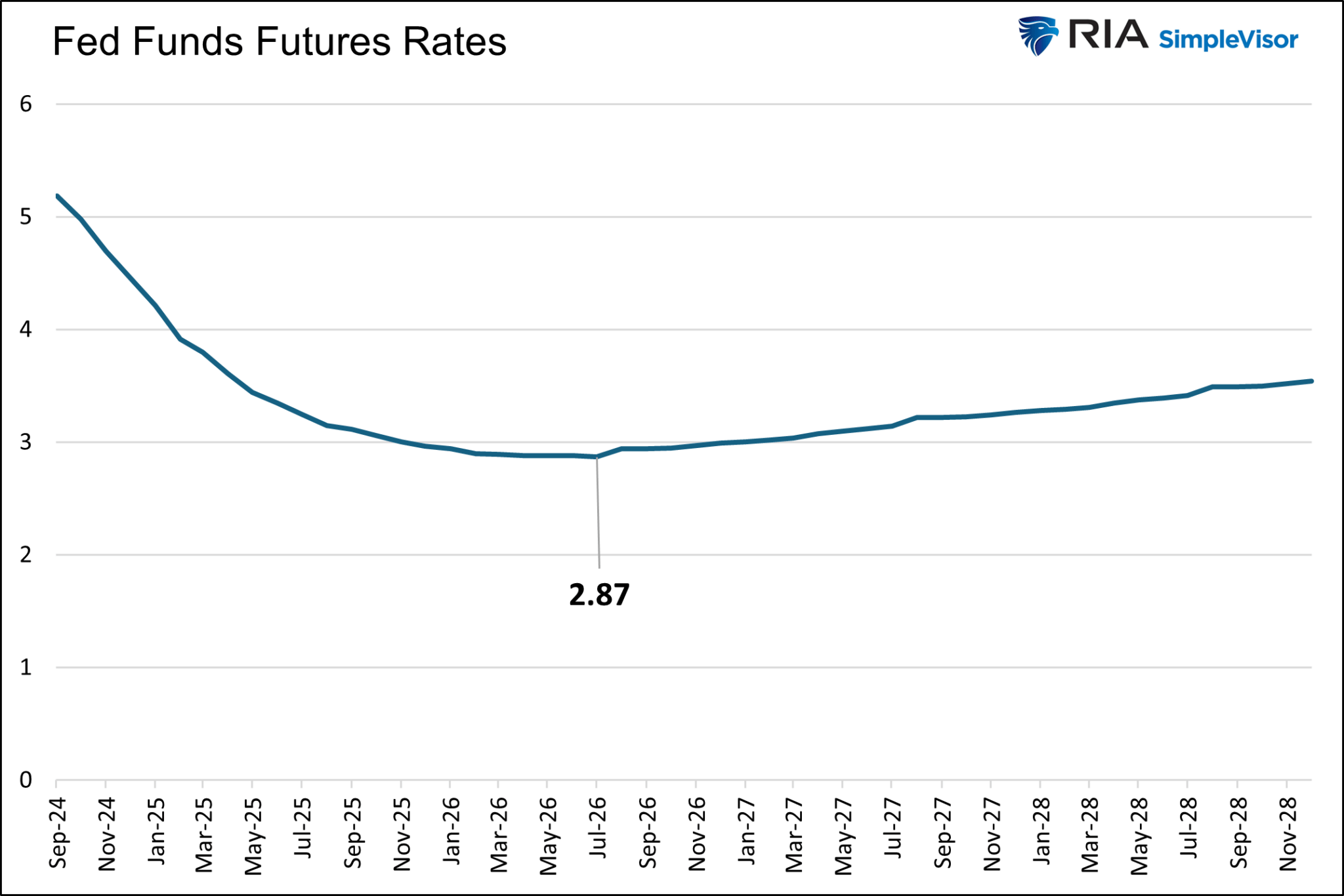We’ve got written many articles and commentaries forecasting rates of interest. The evaluation has used prior and present inflation and financial exercise. Moreover, now we have checked out market information on inflation expectations, Fed Funds futures, and different elements that affect rates of interest. Right now, we add an unorthodox issue to the listing: money cows.
This text introduces a novel strategy to indicate the place dividend buyers suppose rates of interest will likely be sooner or later. The impetus for this text got here from a current article through which we reviewed the Campbell Soup Firm (NYSE:). Friday Favorites usually analyzes an organization’s elementary and technical circumstances and valuations.
This time, nonetheless, as a result of the corporate was a money cow, we took it additional and studied its dividend yield. Within the course of, we arrived at an implied based mostly on the present and historic unfold between Campbell’s dividend yield and the 10-year US Treasury yield.
Implying future rates of interest based mostly on CPB is considerably laughable. Nevertheless, implying future rates of interest on a bigger inhabitants of money cows could also be extra telling.
What Is A Money Cow?
Money cow is a time period dairy farmers use to explain mature cows that generate milk repeatedly with minimal upkeep.
Wall Road adopted the time period money cow to label corporations that ship dependable money flows (milk), require little funding (upkeep), and have little to no gross sales and earnings progress (mature).
CPB is an efficient instance of a money cow. Not surprisingly, the soup enterprise is a low-growth enterprise; due to this fact, it has negligible earnings and gross sales progress. Furthermore, it has constantly paid dividends since 1989 and produces loads of extra money stream that ought to guarantee future dividend funds.
Whereas CPB lives as much as the definition of a money cow, we don’t analyze it on this article as its dividend yield is under our threshold dividend yield. Nevertheless, we did discover fifteen different money cows, which we’ll share.
Screening For Cows
On this evaluation, we used the next screening standards:
- Market Cap > $10 billion
- 5-12 months EPS Development
- 5-12 months Gross sales Development
- Dividend Yield > 2.50%
- Ten Years of Consecutive Dividend Funds
The desk under reveals the fifteen shares that met the screening standards.
What Can We Suggest With Dividend Yields?
The next desk shares our evaluation of the fifteen corporations.
After the ticker and identify of every respective inventory, we present the present dividend yield and the common dividend yield during the last 5 years. The following column, “Value Return to Avg. Div. Yield”, quantifies how a lot the inventory value must change to carry the present dividend yield in keeping with the five-year common. Clearly, an organization can enhance its dividend or minimize it, which might change the return.
The primary set of analyses, which we simply described, helps us evaluate the present dividend yield to current yield historical past on an absolute foundation.
Since some buyers take into account bonds an alternative choice to dividend shares, we should additionally do a relative evaluation of dividend yields. In different phrases, has the dividend yield risen accordingly with rates of interest? To do that, we calculate the present dividend yield minus the present ten-year yield (“Unfold to Tsy”). We additionally compute the common Unfold to Tsy. for the final 5 years. With this information, we will calculate how a lot the inventory value must change to make the dividend yield equal to its five-year common unfold to Treasury yields.
Lastly, assuming the dividend yield moderately predicts the place charges are headed, we will indicate the place the 10-year US Treasury yield could also be within the close to future. We share this within the column furthest to the suitable.
Money Cow Conclusions
Whereas there are various tales inside the desk, we give attention to the averages of the fifteen shares on this article. The present dividend yields are barely larger than common. That is primarily a operate of buyers shunning dividend shares in favor of higher-yielding bonds or shares with higher efficiency. Declining inventory costs push the dividend yield larger, serving to them keep aggressive with bonds. Dividend yield is just one of many elements figuring out the worth; nonetheless, it’s a rather more crucial value determinant for money cows than different shares.
Whereas the dividend yield could also be larger than its norm for the final 5 years, it has not saved up with Treasury yields. Based mostly solely on the yield unfold, costs, on common, would wish to fall by about 15% to carry the meager .41% unfold over the 10-year UST again to regular.
However may inventory buyers be locking in larger dividend yields, anticipating a decrease rate of interest/yield setting? If that’s the case, our money cows indicate the 10-year UST yield would wish to fall to three.05%. Doing so will carry the common dividend yield unfold versus Treasury yields again to its common.
Coincident or not, the market additionally thinks that the will trough at 2.87% when the approaching rate-cutting cycle ends. 
Abstract
Between our article and the money cows we spotlight, the Fed Funds futures market and inventory market seem like on the identical web page relating to future rates of interest.
Some might discover consolation of their comparable predictions. Nevertheless, warning is warranted. The bond market typically underappreciates how a lot the Fed will minimize rates of interest. Moreover, it has been confirmed to be a poor decide of the place long-term Treasury bond yields will fall. Very often, yields fall rather more than anticipated. If that is once more the case, a few of our money cows might even see respectable value appreciation if their dividend yield declines with decrease bond yields.